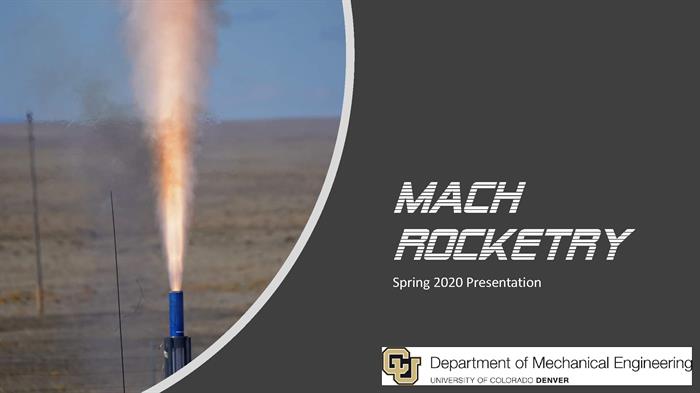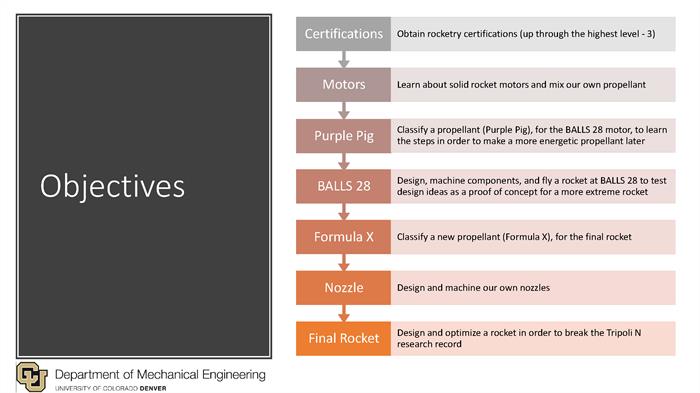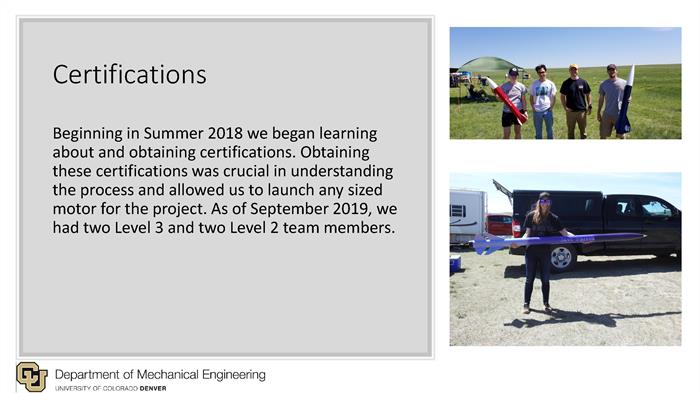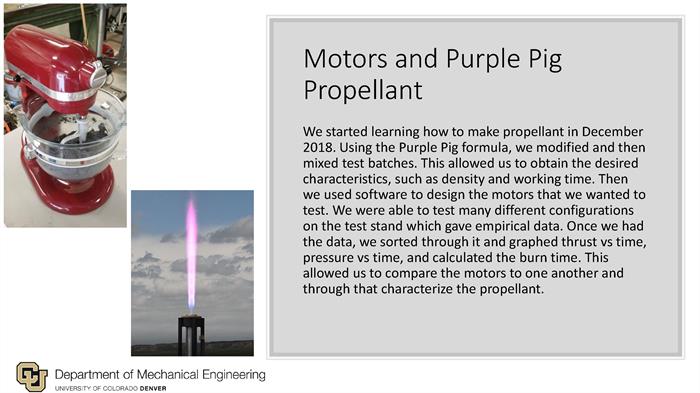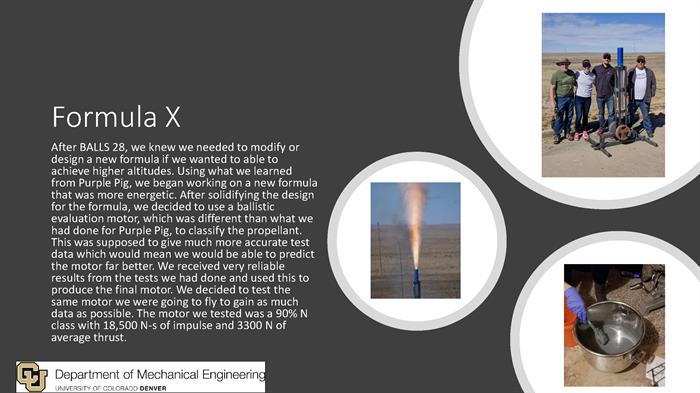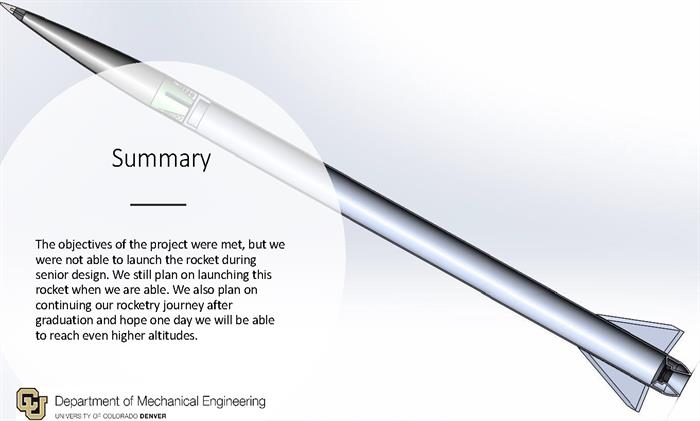MACH Rocketry
Department of Mechanical Engineering
Project Abstract
In Spring 2017, we launched our first rocket for this project. The first rockets were hobby store Estes kits and quickly after these first launches, we were launching our first high power rockets to obtain certifications that would allow us to fly larger, more powerful rockets. After 18 months of flying rockets and learning all we could, we began planning for our proof of concept rocket in late Spring 2019. This rocket was to be a data acquisition tool that would allow us to see how well our designs translated into the real world and how well our software predicted the flight. During the Summer 2019 we wrote a MATLAB code to predict the rocket flight which included supersonic airflow and coefficient of drag calculations well beyond Mach. The test rocket went to 35,300 ft and Mach 2.0 as predicted by the software. This flight also proved that our other designed components functioned as well; these included fins, ejection charges, motor closures, and the nozzle. After this success we were ready to move forward with the larger design and planning started in August 2019. This rocket was originally planned to reach Mach 4.5 at 30,000 ft and then proceed to an altitude of over 300,000 ft. Unfortunately, due to budgetary restrictions, we were forced to scale back the project and optimize the design for weight and speed. We took what we could from the rocket that we launched and began to redesign. The simulations said that the rocket would reach over 65,000 ft and Mach 3.0. At these speeds and altitudes special considerations must be made, including fin geometry/vibration, surface area reduction, rigid motor to air frame attachment, and high-altitude ejection charges. As we began design of these components we simultaneously designed and tested a new, more energetic propellant. We optimized the fins for the minimum surface area, minimum weight, and the highest possible Mach number without the fins vibrating apart. By weight reducing the coupling mechanism we were able to reduce the weight by almost 50% over the previous design and still maintain rigidity. High-altitude ejection charges were tested in a custom built vacuum chamber with a pressure sensor and a variety of charges were tested so we could obtain the most desirable results. The launch date for this rocket has been pushed back due to unforeseen circumstances, but we do plan on flying it as soon as possible.
